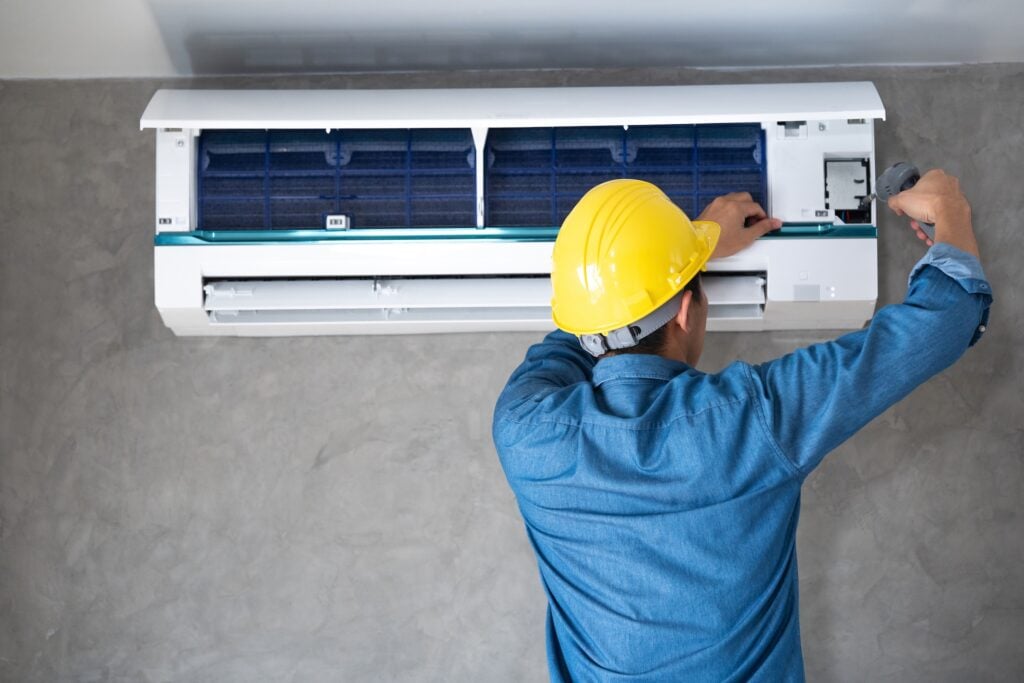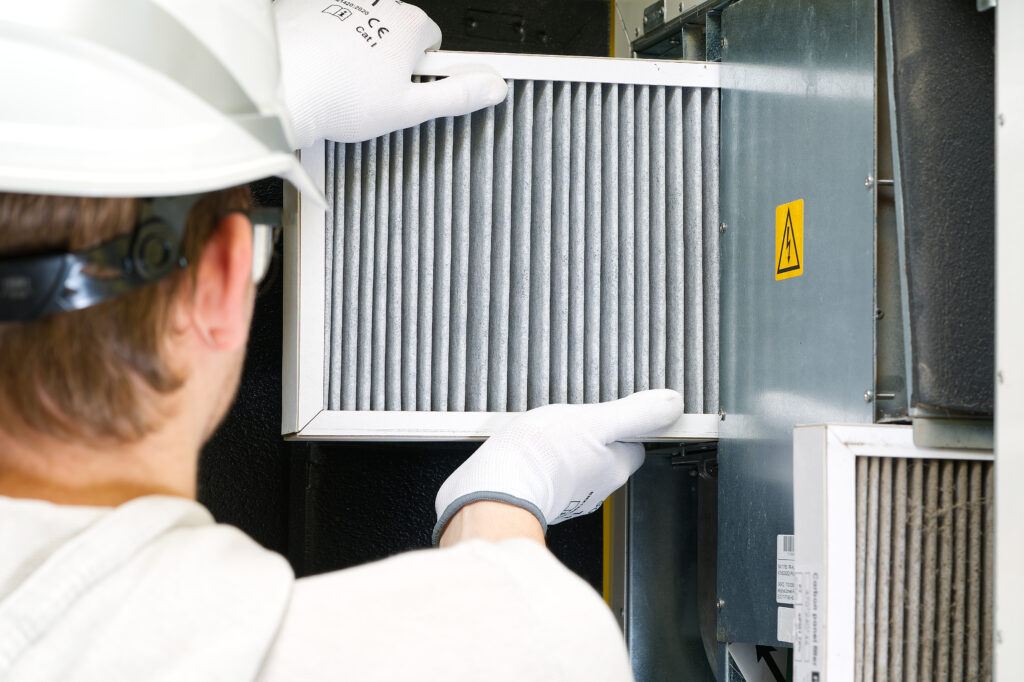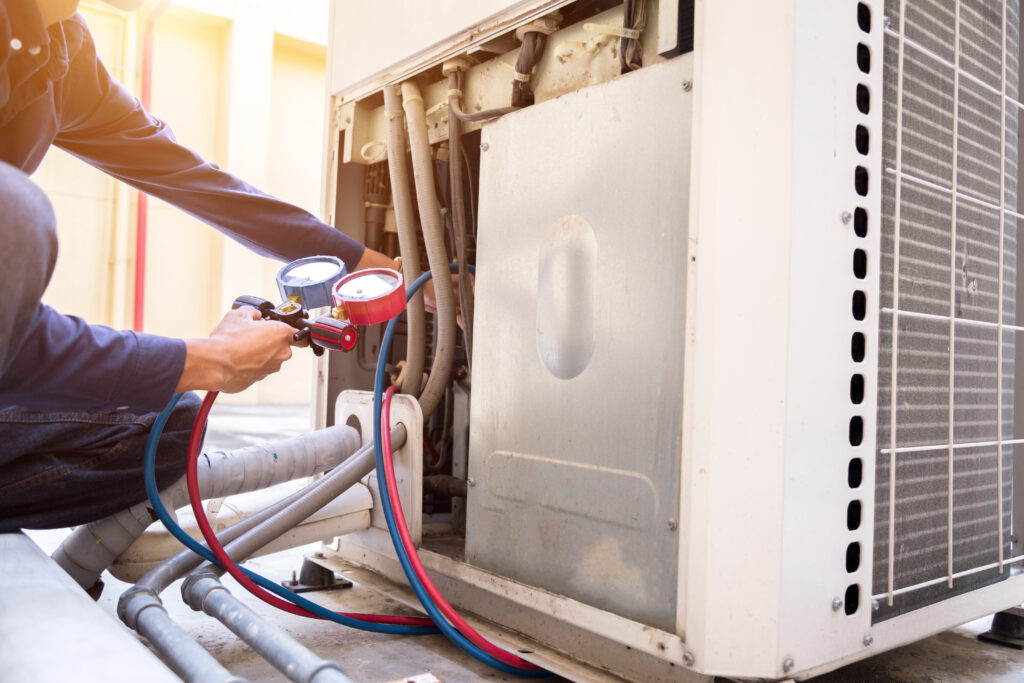


October 17, 2025
What Is the $5000 Rule for HVAC? (Homeowner’s Guide)
When an HVAC system starts acting up, most homeowners wonder if it’s worth fixing or if it’s smarter to replace it entirely. Repairs can be pricey, but replacement comes with an even bigger investment. That’s where the $5000 rule for HVAC comes in. It’s a simple calculation that helps you avoid wasting money on a system that’s on its last legs. With the right guidance and professional HVAC services, you can make a confident decision for your home.
In this guide, you’ll learn:
- What the $5000 HVAC rule is and how to apply it
- Situations where the rule is especially helpful
- Real-world examples of applying the rule
- Misconceptions to avoid when using it
- Professional insights on getting the most value from your system
📌 The Basics of the $5000 Rule

The $5000 rule is a decision-making shortcut for HVAC repairs. The formula:
- Multiply the system’s age by the estimated repair cost.
- If the total is greater than $5000, replacement is usually the better choice.
- If it’s less, a repair may be more cost-effective.
This rule matters because:
- It simplifies tough choices when emotions (or urgency) make it hard to decide.
- It protects your budget by preventing repeated spending on an aging system.
- It saves time by giving you a quick way to weigh repair quotes.
👉 3 Practical Examples to Apply the Rule
Numbers tell the story. Here’s how the $5000 rule looks in real life:
1: The Mid-Age Repair
- System age: 8 years
- Repair cost: $300 (new blower motor)
- Calculation: 8 × $300 = $2400
Result: Repair makes sense — the system likely has more years of service left.
2: The Aging Compressor
- System age: 12 years
- Repair cost: $1200 (compressor replacement)
- Calculation: 12 × $1200 = $14,400
Result: Replacement is smarter — the repair is costly and the system is near the end of its life.
3: The Borderline Call
- System age: 10 years
- Repair cost: $500
- Calculation: 10 × $500 = $5000
Result: Either option could work. Here, comfort, efficiency, and your future plans matter most.
🧭 When the Rule Is Most Useful

The $5000 rule isn’t something you’ll use every year. It’s most valuable in these scenarios:
- Large Repairs: If the quote is over $1000, running the math can clarify your next step.
- Older Systems: For units over 10 years old, the rule helps weigh repairs versus end-of-life replacement.
- Budget Decisions: Homeowners planning to sell soon may lean toward a repair, while those staying long-term often choose replacement.
- Uncertain Efficiency: If you’re frustrated by rising utility bills, the rule can highlight whether a new system might save money in the long run.
🚫 Common Misconceptions About the $5000 Rule
Like any guideline, the $5000 rule can be misused if you don’t consider the bigger picture.
- Myth 1: It’s an Absolute Law
It’s a guideline, not a hard rule. Comfort, resale plans, and warranties all matter. - Myth 2: Any Repair Under $5000 Is Worth It
Not always. A small repair on a 15-year-old system may still not be wise if more issues are likely. - Myth 3: The Rule Ignores Energy Costs
In reality, a new system’s efficiency can lower utility bills enough to offset the upfront investment. - Myth 4: It Applies Equally to All Equipment
Different systems (furnaces, ACs, heat pumps) have different lifespans, so the “age factor” varies.
📋 Factors That the Rule Doesn’t Cover
The math is simple, but your decision shouldn’t be based on math alone. Here are key factors the $5000 rule skips:
- Energy Efficiency: A new system may cut bills by 20–30%.
- Comfort Upgrades: Modern HVAC units offer better humidity control and quieter operation.
- Safety Issues: A cracked heat exchanger, for example, is dangerous even if the math suggests repair.
- Refrigerant Phase-Outs: Older ACs that use R-22 refrigerant are expensive to service and should be replaced.
- Warranty Coverage: If your repair is covered, the $5000 calculation doesn’t apply.
🧰 Pro Tips for Getting the Most Out of the Rule
HVAC professionals often use the $5000 rule as a starting point, then add experience and context. Here are insider tips:
- Ask for a second opinion: One contractor’s “replace” might be another’s “repair.”
- Look at repair history: Multiple recent repairs suggest more to come.
- Check efficiency ratings: Compare your unit’s AFUE or SEER2 to modern models.
- Think long-term: If you plan to stay in your home for 10+ years, replacement often wins.
- Don’t wait for emergencies: Making decisions during a breakdown usually leads to higher costs.
🏠 A Real-World Scenario: The Winter Breakdown
Imagine this: It’s January, and your furnace stops working during a cold snap. The technician quotes $800 for a repair, but your furnace is already 13 years old. Here’s how the $5000 rule guides the choice:
- 13 × $800 = $10,400 → well above the $5000 threshold.
- Even though the repair would get your furnace running again, you’d be investing in a system that’s already nearing retirement age.
- Replacing now avoids pouring money into a short-term fix and ensures you won’t face another breakdown next winter.
On the flip side, if that same repair were needed on a 6-year-old furnace, the math would favor repair — and you’d likely get many more years of service.
🍂 Seasonal Timing: When Repairs Hurt More
The timing of a breakdown often influences how you use the $5000 rule.
- Summer Failures: AC compressors tend to fail on the hottest days. Replacement may not be immediate due to demand, but investing in a new system ensures comfort for years.
- Winter Failures: Heating breakdowns in freezing weather create urgency. While repairs may be tempting, the $5000 rule helps you avoid short-term fixes that don’t last.
- Off-Season Repairs: If your system fails in spring or fall, you may have more flexibility to plan a replacement at a better price.
💵 Repair or Replace? A Homeowner’s Decision Framework
Here’s another way to frame the decision alongside the $5000 rule:
| Question | Lean Toward Repair | Lean Toward Replace |
| System Age | Under 10 years | Over 12 years |
| Repair Cost | Low (<$500) | High (>$2000) |
| Efficiency | High-efficiency unit | Outdated, low efficiency |
| Comfort | Reliable, even temps | Uneven, noisy, drafty |
| Plans | Selling soon | Staying long-term |
🔍 How Contractors Use the Rule Differently

Most HVAC professionals don’t treat the $5000 rule as the final word. Instead, they blend it with experience:
- Load calculations: Contractors consider whether your current unit was properly sized. An undersized system may never have performed well, making replacement more logical.
- Energy audits: Some companies will review your insulation, ductwork, and energy bills before recommending a solution.
- Future technology: With refrigerant changes and efficiency standards evolving, pros may advise replacement even if the $5000 math leans toward repair.
This human perspective ensures you don’t just follow a formula but make a decision that fits your specific home.
📞 Ready to Make the Right Choice?
The $5000 rule is a practical tool for homeowners deciding between HVAC repair and replacement. But like any shortcut, it works best when combined with professional insight. Your comfort, safety, and budget all matter just as much as the math.
If you’re facing a repair decision and want clear, expert advice, contact us today to schedule an inspection. We’ll help you understand your options and apply the $5000 rule in a way that makes sense for your home.


